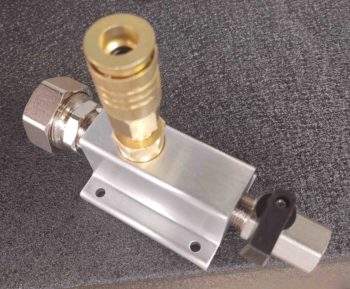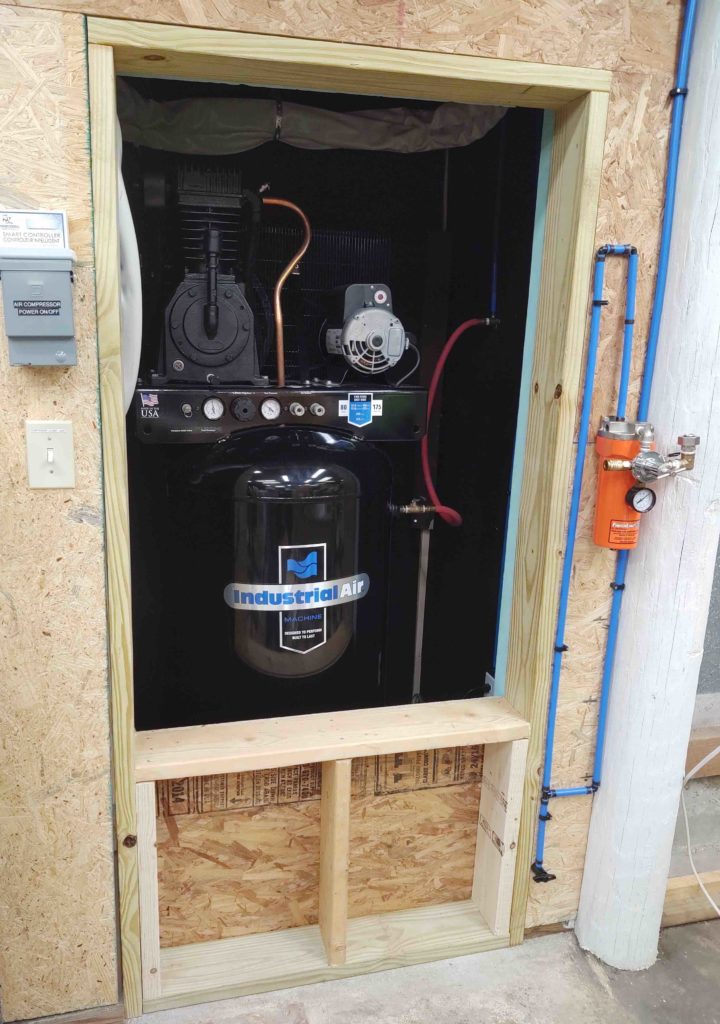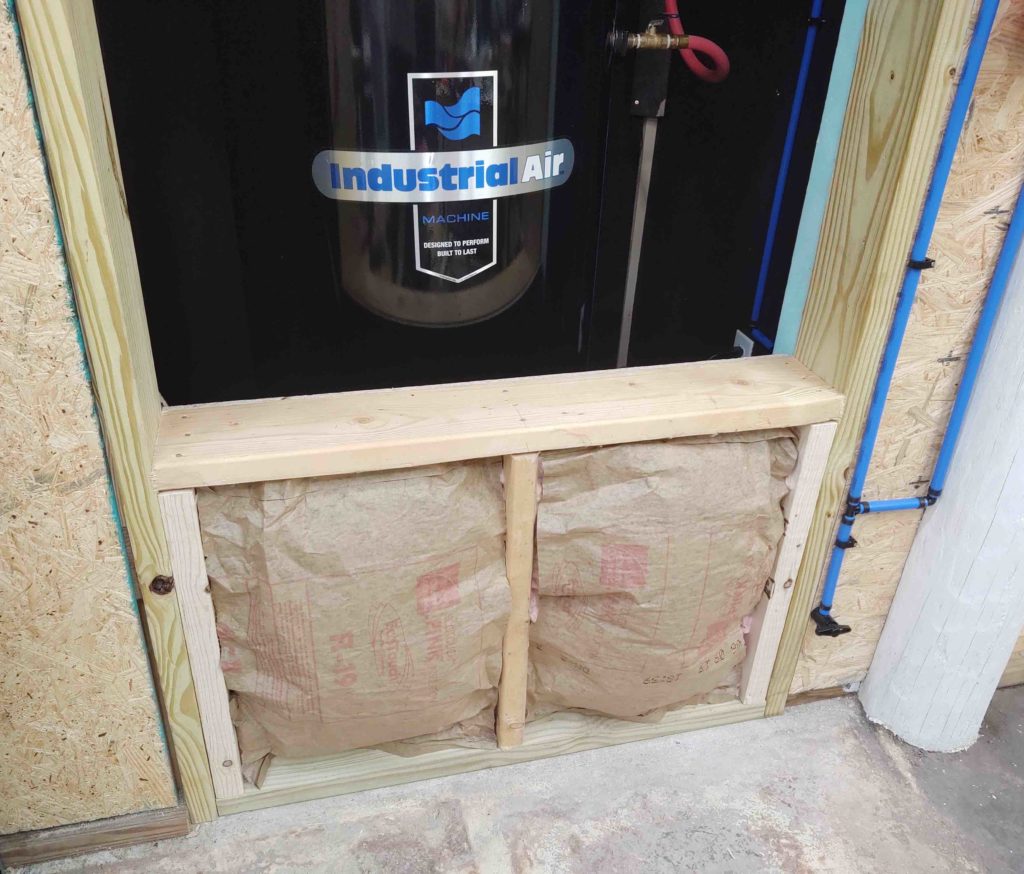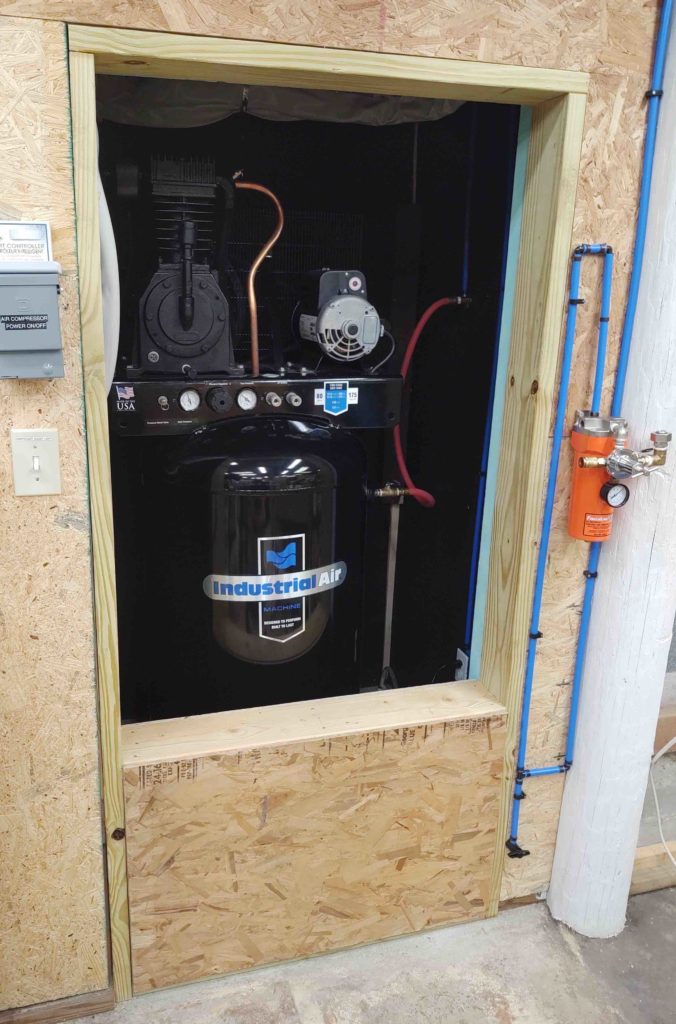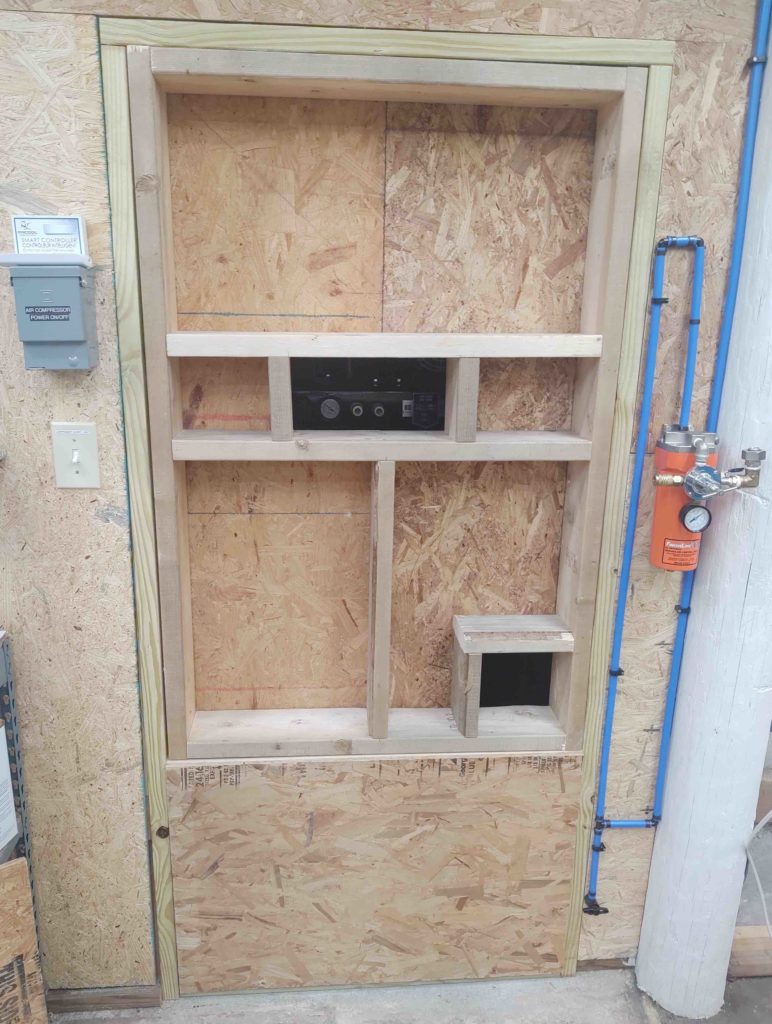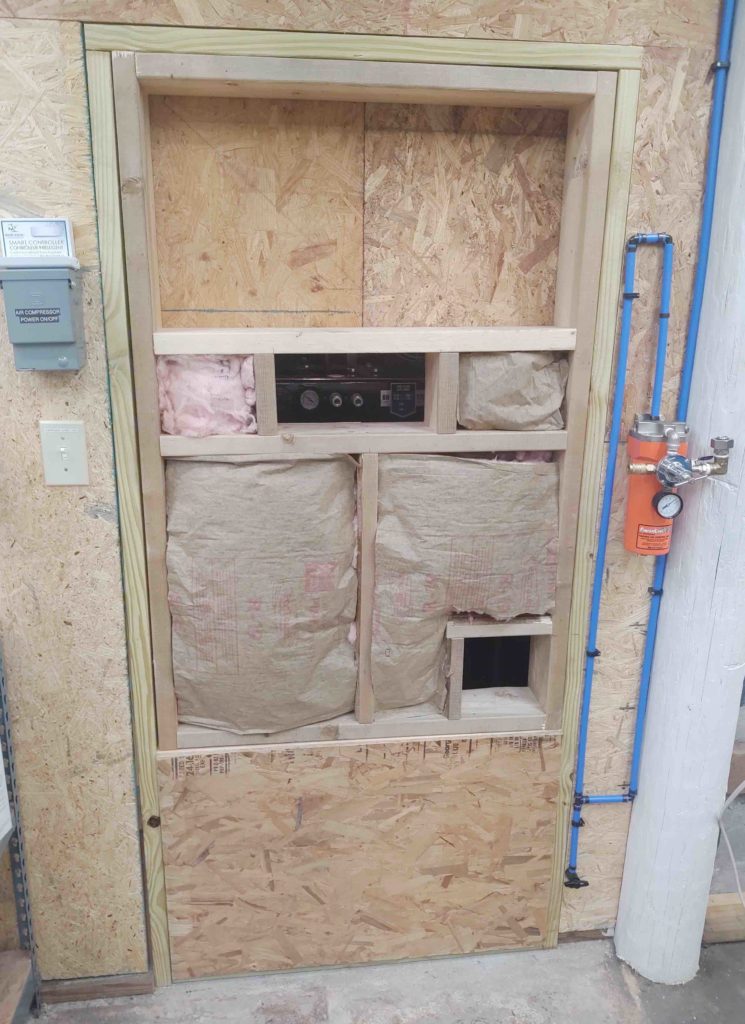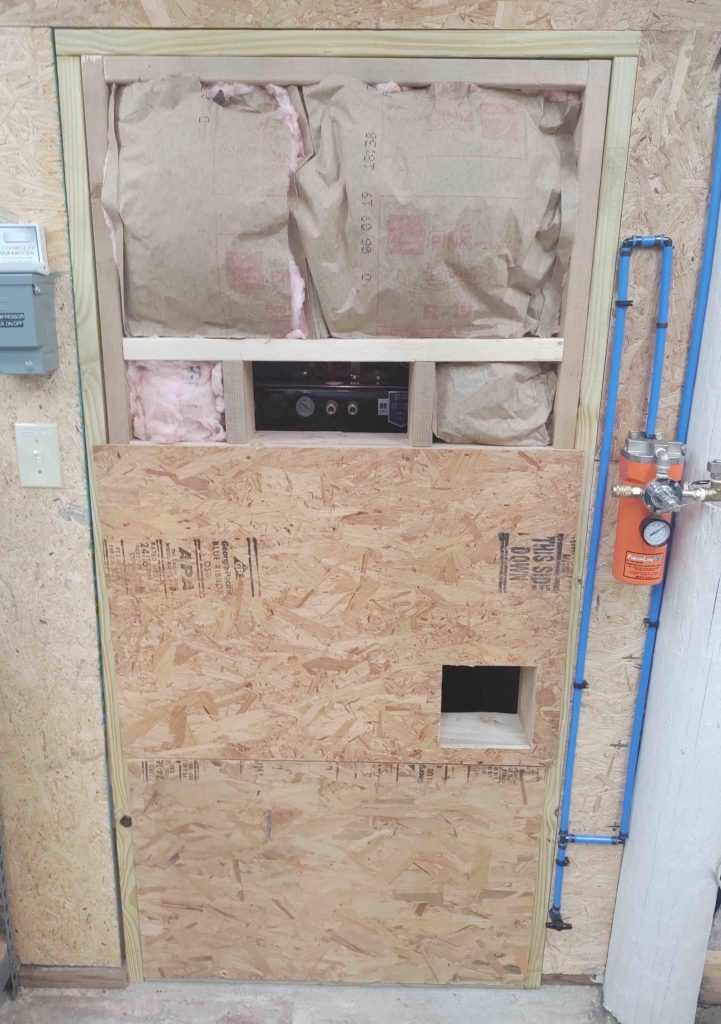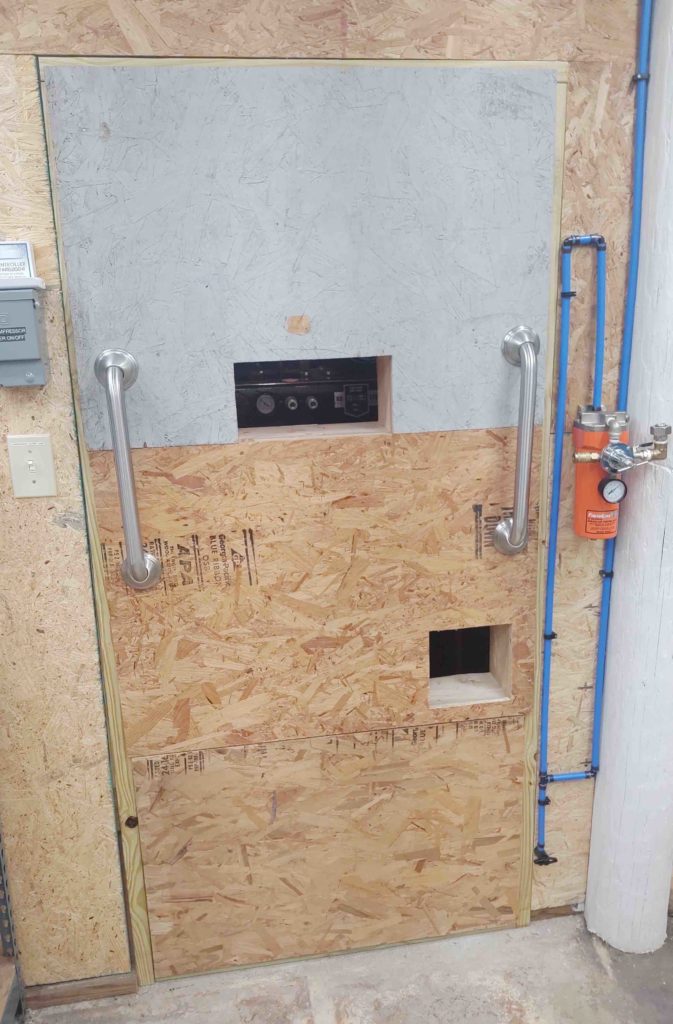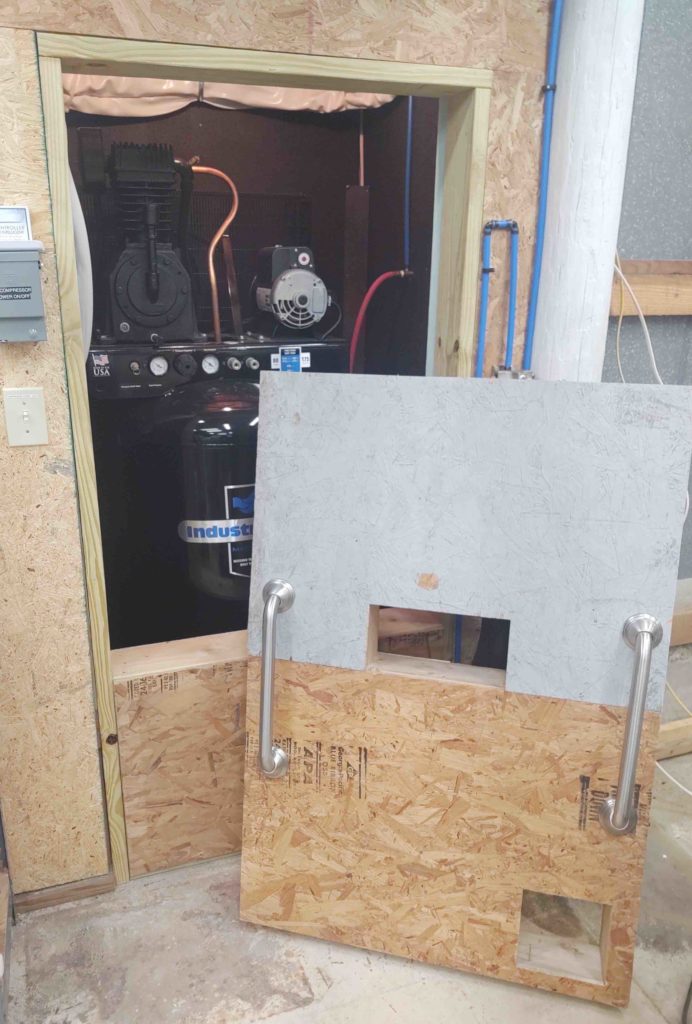First off, wanted to let ya’ll know that I spent well over an hour compiling all my seat core notes and pics and sent them off to Lisa at Oregon Aero. Over the ensuing days she conferred with Alice who then spent an hour with me on the phone today going over all the seat core mods that need to be done.
I have some homework to do on them: a couple of fit checks and some measurements to take before I pack up the cores and send them back to be tweaked. Should get them out by the end of the week.
I grabbed a close-up shot of one of the MaxLine kit’s Air Outlet that I’ll have in the center wall at each end of the shop, and also one between the big doors. Each outlet has a water drain. I think they did a great job machining them and they are both well built and good looking pieces of equipment.
Over the last couple of days I was able to get the air compressor closet door filled in. I started off by adding an OSB panel to the backside of the lower doorway wall. This structure is permanently mounted for the most part and is something that I don’t plan on removing unless I really need access into the compressor closet. It allows for a shorter upper door to help reduce its weight.
I then insulated with 2 layers of 2×6 insulation in each compartment.
And covered the outside with another OSB panel.
I then framed out the upper door. However, since I wanted the frame of the upper door to be fairly snug in the doorframe itself, I realized that the hinges I had just wouldn’t work. The door is simply too thick to swing into the closed position as a regular door would. Thus, I have relabeled it from compressor closet door to “hatch,” since there will be no hinges now.
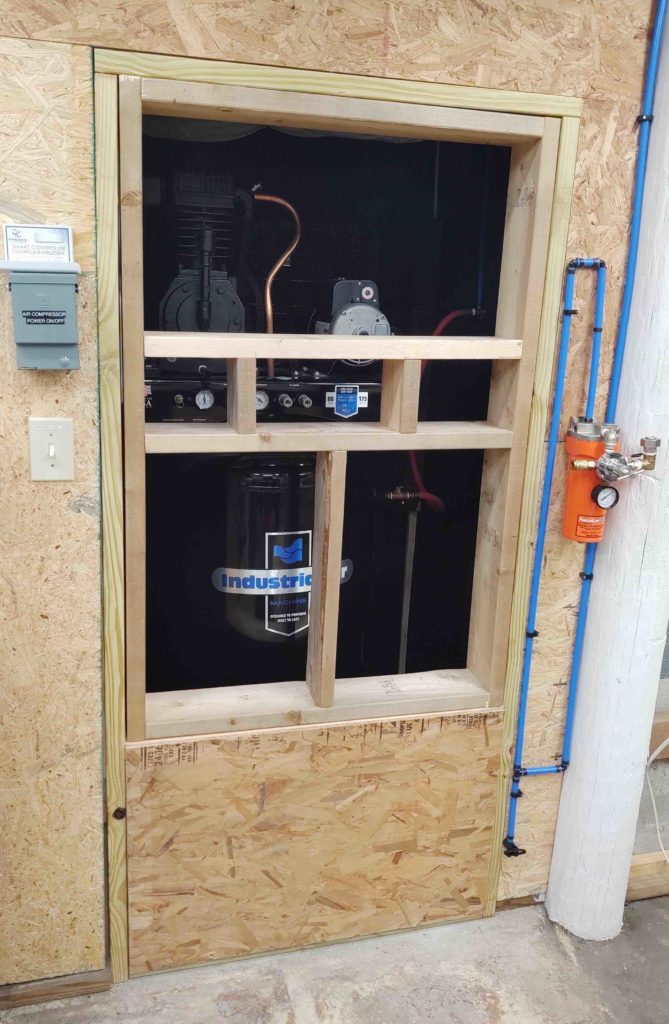
I had planned from the very beginning to build in a window to allow me to gain access to the compressor’s controls and view the gauges. And although most likely rare, I can also connect 2 more air hoses up to the compressor front hose ports if need be.
Below is what I see looking through the small portal in the air compressor hatch.
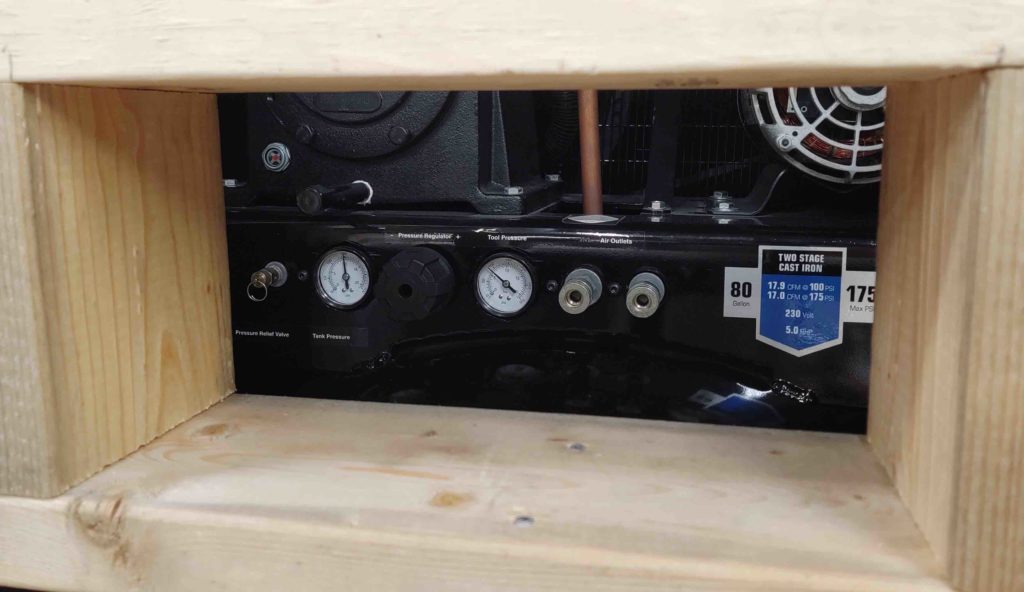
When I put in the air compressor lines, including a water trap inside the closet that has a drain valve, I figured I would simply open the compressor closet door, open the water trap drain valve for a few seconds and then close the door. However, with the door now being a hatch and it being too heavy to remove on a regular basis, I decided to add another small access portal in the lower right corner that is big enough for me to reach my arm into the closet and manipulate the water trap valve.
Below you can see the new lower corner opening framed in, as well as the backside hatch paneling.
As with the lower doorway wall section, I double insulated the upper hatch.
Cut and attached the lower external panel.
As a point of note, all this OSB is scrap from a bunch of it that I have out under the carport. So here is another scrap piece that I cut to use as the upper panel to the air compressor closet hatch. Also note the view of the compressor control panel through the center portal. These hatch openings will be filled with thick foam to minimize the sound of the compressor.
You can also see that I repurposed two stainless steel handles that I pulled out of the house to use to pull the hatch open and replace it when it’s time to button it up.
The hatch is quite heavy, but not too heavy to occasionally remove it to change the compressor oil and perform any other required maintenance.
With the hatch mounted I did fire up the compressor and checked the noise level. One foot away from the hatch I got a max dB level reading of 70 dB. The average though was around 67 dB. When I moved 6 feet from the hatch the noise level dropped greatly to 55 dB. Clearly the noise will be notable when the compressor kicks on, but will be very acceptable and not ear-splitting when it does. Moreover, I expect those noise level numbers to drop quite a bit once I get the openings filled with foam plugs.
Tomorrow I hope to get the shop air hose conduits installed so I can then move onto insulating the walls and covering them with OSB panels.

